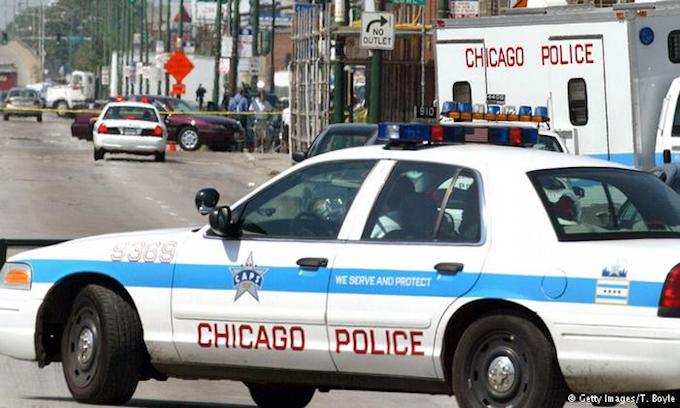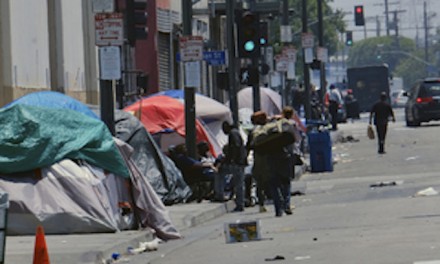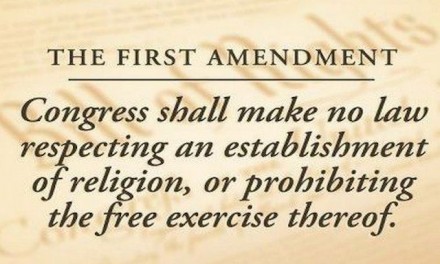The Chicago Police Department on Wednesday announced a policy on foot pursuits following the fatal shootings in late March of Adam Toledo and Anthony Alvarez, both of whom were shot and killed by officers who ran after them.
A temporary version of the policy will go into effect on June 11, but residents and community leaders will have an opportunity to offer feedback before it becomes permanent in September, police Superintendent David Brown said at a Wednesday press conference.
Some of the highlights of the new temporary policy include: prohibiting foot pursuits for minor traffic violations; not allowing officers to separate from their partners if they can’t see the person they’re chasing; stopping the chase if officers believe they wouldn’t be able to control that person; and making attempts to contain a suspect to a particular area by notifying outside police units as an alternative to chasing them.
The policy also called for officers to use a so-called “balancing test” to determine whether a foot chase is appropriate, assessing the seriousness of the crime against whether a pursuit could put the suspect, officer or any bystanders at risk of getting hurt. It also says that officers can only pursue people on foot if they have probable cause that the person committed the crime or believe that they’re about to commit one.
On Wednesday at police headquarters, Brown said officers had already been using using these strategies during foot chases, but now they’re codified for the first time in a written policy.
Officers could now be subject to disciplinary action if they violate It, he said.
“Just putting it in a policy and codifying it, I think, is a best practice,” Brown said. “We want you (officers) to be safe in doing your job. We want everyone to be safe based on how we pursue…We want better outcomes for our officers and for the people of Chicago.”
The week after the fatal shootings of Toledo and Alvarez, Mayor Lori Lightfoot announced to reporters how the department would implement a foot pursuit policy by summer.
Her news conference that day, flanked by Brown, was held at a church in Little Village, the same neighborhood where Toledo, 13, was gunned down after a chase in an alley in late March.
The press briefing was part of an event aimed at calming the city ahead of the eventual release of video showing the teen’s killing.
Toledo was fatally shot by Officer Eric Stillman in the early morning hours of March 29 in a Little Village alley after a foot pursuit, touching off protests and demonstrations in the neighborhood. Various camera angles viewed at slower speeds appeared to show the teen tossed a gun and was turning with his hands raised when the officer fired a single shot into his chest.
Alvarez was shot and killed by Officer Evan Solano on March 31 in the Northwest Side’s Portage Park neighborhood. On the police body-camera footage released by the Civilian Office of Police Accountability, officers can be seen running down an alley at first, then bearing down on Alvarez as they turn a corner onto a small lawn. Third-party camera footage that seems to be from a security camera from the home Alvarez was shot in front of shows him release a gun as he falls to the ground, and police have said a gun was found on the scene.
Lightfoot’s call for a foot-chase policy came four years after the U.S. Justice Department recommended in a report about CPD’s practices that it adopt such a policy.
A Chicago Tribune investigation in 2016 found that foot chases played a role in more than a third of the 235 police shooting cases in the city from 2010 through 2015 that ended with someone wounded or killed. In 2017, the Justice Department’s investigation into Chicago’s police practices noted that foot pursuits are “inherently dangerous and present substantial risks to officers and the public.”
During Brown’s tenure as the Dallas police chief from 2010 to 2016, that department developed a foot pursuit policy for officers following a controversial officer-involved shooting in 2012. At the time, that policy prohibited Dallas police officers from engaging suspects alone during foot chases, though it was relaxed a few years later.
But the Dallas foot-chase policy, which indicates on that police department’s website that it was revised in November 2018, says it’s to be used “as a training tool” for officers, and “no discipline will be associated with violations.”
©2021 Chicago Tribune. Visit chicagotribune.com. Distributed by Tribune Content Agency, LLC.
—-
This content is published through a licensing agreement with Acquire Media using its NewsEdge technology.



















Officers have to go barefoot and the criminals get a head start.
Maybe they should do the Wiley Coyote and Roadrunner thing—if the police ever catch a criminal, they don’t know what to do with them. I vote for instant holes—the officers can throw them out and the criminals can fall in. Never have to worry about tasers and guns.
One for the money, two for the show, three to get ready and the trifecta losing stumbling Mayor has to go. Perhaps she expects to hire Shirley Temple and Mr. Bogangles to dance his way after the crooks. Chicago Democrat rebels have turned the police force into a tapdancing politically correct show for entertainment only. There is a civil war brewing out on the streets and all they want to do is put on a show, hiring diminutive women and only people of the correct colored persuasion to enforce the law, trained only how to dance about the truth.
https://www.bing.com/videos/search?q=bojangles&ru=/videos/search?q=bojangles&view=detail&mid=11C004BE799A87206BC711C004BE799A87206BC7&&FORM=VDRVRV
Might as well call it “To heck with it, let crooks go” policy.
Just one more Light-headed response by Light foot to make the Chicago police force as Light-footed and light minded as the mayor. Granted a large majority of the donut devouring, out of shape, desperate to hire anyone these days depleted police force, probably could not out run a toddler. Many minor traffic violations are major indications that the perps are under the influence of drugs or alcohol on their way for a major traffic crash and death of innocent civilians. More drugs and illegal guns have been harvested from minor traffic stops, enough each year to inebriate or arm a division of radical socialist anarchists. The Democrats are just moving to protect their own criminal anarchistic minded Chicago Socialist shock troops. For want of a nail the shoe was lost, for want of the shoe the horse was lost, for want of the horse the message was lost, for want of the message the war was lost, and for want of an honest mayor the city war on crime was lost.
Just shoot the perps in the first place, thus avoiding a foot chase altogether. lori fungusfoot, keep looking for ways to hog tie the police.
After Rodney king ,the police in California started using Tranquilizer shots. It worked but the 13% claimed they were being shot like animals. So that’s when they started using Tasers. I think we need to go back to the Tranquilizer darks.
Na.. just use frozen paint balls!!
Crime is exploding, but that is what the Democrats want. They want a divided country in chaos so they can impose socialism. The “Democrat Party” is an existential threat to America.
Oh, Lori, your city is a sewer of crime and the police have their hands and ankles in handcuffs. You, Lori Lightfoot, condone the crime and murders in Chicago, so you are a racist against the innocent black people that are victims of crime or killed by criminals!
SHE LIKES It being a sewer..
Another Chicago police policy: You can only arrest a criminal if he gives up or surrenders to a police officer, otherwise he, she, must be allowed to go in peace.